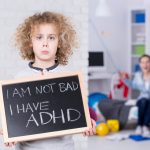Relational Medicine Perception, Epigenetics, & the Vis – Part 2
Vis Medicatrix Naturae
Allison Creech, MED, ND
Part 1 of this article introduced relational medicine and discussed how both perception and attachment are powerful determinants of biopsychosocial wellness. In Part 2, we now examine the effects of our early-life relational experiences on our adult lives, and discuss how we can support the Vis through engaged and responsive patient care.
An Epigenetic View
Bruce Lipton, PhD, has long been a champion for a new understanding of biology (see, for example, his 2005 book, The Biology of Belief).1 As Dr Lipton discusses, our perceptions are fundamental in the way they affect our thoughts, feelings, relationships, and cellular selves. Mind and body are mutually determined through a sophisticated system of information flow at the cellular level. In a 2017 presentation,2 Dr Lipton describes how proteins and signals interact to elicit cellular behavior related to genetic expression. He notes that only a small percentage of disease is due to defective protein synthesis (eg, genetic birth defects, monogenic disorders, or random mutations). Rather, the vast majority of diseases are best described as “multifactorial inheritance disorders,” meaning that variations in multiple genes interact with environmental factors to affect health and behavior.3 The old story of nature vs nurture is evolving toward a more complex understanding of how nurture activates nature’s potential. As genetic testing becomes more widespread and available to the general public, we will have greater professional opportunity to explore the correlations between genetic expression and disease outcomes as relationships that interact with other factors, rather than as singularly causative certainties due to faulty genes. For most people, the experience of wellness vs disease is largely determined by our subjective experience in life, and the way that experience directs organization through mind, brain, body, and genes. Our experience within our environment, governed largely by unconscious perceptual systems, is emerging as a primary determinant of health.
With a growing public interest in genetic testing and a robust scientific understanding of the ways that molecular DNA modification pathways function [for a simple but complete summary, see the fact sheet on Epigenomics at www.genome.gov], as well as the role of specific nutrients as epigenetic regulators, our profession is well equipped to support patients in an active design for health. Certainly, any efforts to reduce toxicity and sustain a wellness lifestyle will have positive physiologic as well as epigenetic effects. However, if we are truly seeking to promote the Vis and optimal expression of life force energy, then we must expand our focus to the primary determinant of our inner environment and step into the realm of perception.
Regulating the Inner Environment
It appears that the most pervasive epigenetic regulators have less to do with what our bodies are exposed to and more to do with what we as feeling/sensing creatures make of that experience. This is the power of perception, both that which we are aware of as well as those perceptual structures that are housed deep within our unconscious. When working to support the Vis and activate epigenetic protectors of health, we must acknowledge the power of perception, particularly with regards to its influence on blood chemistry and stress response systems.
We know that our direct perceptions of the world and our place in it are translated through our nervous system and blood chemistry. Our perceptions direct stress response systems, triggering activation through specific brain centers as well as the hypothalamic-pituitary-adrenal (HPA) axis. This will also heighten cognitive-emotional-social systems to attend to any data that is part of that perceptual system, either amplifying or relieving the activation. Our perceptual state also has a direct line of influence on the composition of our blood, by way of hormones, neurotransmitters, and other metabolic byproducts. If a perceptual state of alarm is activated, chemical messengers will flood into our bloodstream, interact with our cells, and organize a cellular response. In this way, perception determines blood chemistry determines our internal environment determines genetic activity. What’s interesting is that this happens whether or not our perceptions are aligned with the sensory data received by our brain.
All external and internal signals are relayed through the brain. However, these signals are not directly perceived; rather, they are translated through our lived experience, our “mind,” and we form a discrete perception that may or may not reflect the objective, data-based information that was originally relayed to the brain. The perception, then – and not the original data – is conveyed back through the brain and nervous system, affecting all systems of the body (psycho-neuro-endocrino-immuno-cardio-etc-ology).
In other words, external signals are taken in as sensory data and processed in the brain, but it is the interpretive analysis of that data at the level of the mind (eg, “perception”) that actually activates our nervous system and thereby influences cellular behavior and gene activity. What we perceive as “true” directs our experience through both mind and body, whether or not that perception is confirmed by external reality. For example, if you perceive a threat, you will experience the mental, emotional, and physiologic sensation of alarm. This is true whether or not a threat was actually present.
When perceptions that provoke alarm activate through the HPA axis, they alter physiology throughout the body and create a cascade that leads to disturbances in mind, body, and genome. As naturopathic physicians, we are familiar with the clinical impact of stress. However, we may not have considered perception as a root cause of a maladaptive stress response. From this perspective, we can consider perceptual organization to be 1 of 3 specific pathways where faulty signals disrupt biologic function, the other 2 being due to either physical trauma that changes the body’s ability to manipulate energy (eg, a spinal cord injury) or chemical toxicity (eg, nutritional deficiencies or molecular toxins that affect metabolic pathways).2 The presence or absence of wellness during our lives has much less to do with genetic inheritance and much more to do with the signals that are consistently transmitted throughout our lives, particularly with regards to our perceptual experience of safety.
The Perceptual Experience of Safety
As we know, an infant’s experience of safety is wired into the brain, the central nervous system, and developing cognitive/emotional systems. Without any conscious awareness of an experience, that experience will direct and organize perception for the rest of the person’s life, impacting cellular homeostasis, emotional processing, resilience to stress, and coping systems. When we work with patients at the level of perception, we have an opportunity to help change those set-points and thereby restore Vis energy though the body, mind, and genome. Perceptual recalibration promotes integration around an experience of safety, which in turn has profound implications for health.
When an infant experiences the biological stress of having an unmet need, cortisol systems activate through the adrenal glands and HPA axis. The infant experiences a state of biological alarm, a physiologic release of stress chemicals, and psychological distress. As the caregiver attends to the child to meet their needs, the child’s neuroendocrine experience shifts to a state of biological calm and the child is soothed by interpersonal connection. As this cycle repeats itself, an infant develops an experience of trust (in their own body, in their needs, and in the response of significant others and the world itself, in terms of having those needs met). This is a fundamental template of perception that the infant will use to organize its experience in the world through the rest of its life: Am I safe? When the answer to that question is “yes,” our mind-body-genes function in an integrated system that allows Vis energy to flow.
In terms of defining the experience of safety vs unsafety by way of attachment, researchers have consistently reported similar statistics when assessing attachment within the North American population: about 60% of people experience a securely attached primary relationship in early childhood, and about 40% do not. Said another way, about 60% of the population has a foundational perception of safety in their body and in the world, while 40% live from a perceptual reality of fear/alarm/uncertainty/lack of safety.4
Held out of conscious awareness, yet highly active at the interface of mind and body, this powerful perceptual foundation directs our experience throughout life. As J. Shonkoff, MD, explains,
Our experience in relationships, our perceptual state around safety or lack thereof, and the actual formation of the brain will direct the ways that a person attempts to navigate life. Stress-induced changes in the architecture of different regions of the developing brain (e.g., amygdala, hippocampus, and PFC) can have potentially permanent effects on a range of important functions, such as regulating stress physiology, learning new skills, and developing the capacity to make healthy adaptations to future adversity.
(Jack P. Shonkoff)5
Compensation via Connection
I am sure that all of us can think of patients we have encountered who describe waking up anxious, who suffer from unregulated emotional arousal, or who consistently doubt themselves and/or their relationships, thereby finding it difficult to come into a place of inner trust and stable connection. Their nervous systems may be tuned to great sensitivity, and they may seem to be overwhelmed by their life challenges while continually seeking an external compass to guide them. This is a prototype for people whose basic perceptions register a lack of safety and who compensate by seeking others and trying to grasp an interpersonal lifeline that seems ephemeral and elusive. They are preoccupied by relationship – its status, its degree of connection, and its availability. Physiologically, their central nervous systems are wired so as to seek regulation from an outside source; they need the other.
These individuals’ perceptual bias tells them that they are not safe unless they are actively engaged with another, and so they may be motivated to seek connection by any means possible. They have learned to cope with their experience of insecurity by developing a behavioral repertoire that either demands another’s attention or ingratiates them within the relationship so as to keep it available. This might lead to a pattern of relying on intense emotional expression as a primary route for communicating their needs to significant others. Another possible pattern involves suppressing one’s own needs so as to please or fulfill the needs of others, thereby maintaining connection. Because the relationship feels essential to their survival, themes of rejection and abandonment are often prominent. People tend to cope with the stress of this fear by focusing intently on the subtleties of their relationships, creating narratives that reinforce their basic perceptual bias and diminish their sense of self. We might also see patterns that tend towards explicit dependency, codependency, and a desire to preserve a relationship at all costs. In general, a person with this sort of perceptual bias is very other-focused. They are also going to have an unconscious perceptual activation of alarm whenever their relationship or their position within a relationship feels threatened, leading to an overactive and/or dysregulated stress response system as well as negative psychological and epigenetic correlations. To someone wired this way, an event as seemingly minor as a delay in an expected text or phone call from a loved one can even feel like a threat. Because their perceptual default is “I am not safe” or “I need another to make me safe,” they are primed to perceive data that confirms this, thereby activating a state of alarm with great regularity. A therapeutic shift for these patients will include integration of a mind-body awareness of a capable, worthy, and independent self. They must learn how to regulate themselves into an experience of inner calm, safety, and security. Trust in the self emerges, biochemical and hormonal pathways shift, and the Vis expands.
Compensation via Isolation
Undoubtedly, all of us can also think of patients we have met who wall off and shut down their emotional lives so as to live in a protected place of distance and disconnection. The perceptual bias of the prototype here is that others are not safe and will not meet my needs, so I am better off alone. Safety is achieved through isolation, and connection may seem threatening. To this end, relationships are generally resisted or kept at a superficial level, even with a long-term partner. Emotional intimacy does not feel safe, nor does emotional awareness. Vulnerability of any kind is perceived as a major threat. To guard against this distress, we might see a denial of emotional needs and emotional suppression coupled with a heightened sense of independence or self-reliance. Anything or anyone that challenges this state of autonomy and emotional control will be perceived as a threat, and people will tend to cope with this stress via further disconnection. This can translate into an intense focus on work or some other performance-based measure of achievement, or into a tendency for abrupt physical separation. In general, a person with this sort of perceptual bias is very self-focused.
Because this prototype has a perceptual default of “I am safe when I am alone” or “I am safe when I meet my own needs,” any indicator that they need another will provoke unconscious alarm. They may seek relationships, but at the same time feel fearful within them. The fear is related to their fundamental experience in relationship, which is essentially one of trauma. Whether it was intentional or not, their emotional needs were neglected and their infantile attempts to seek connection were met with distance and disengagement. Because the significant adults in the child’s life were not able to soothe the child’s distress, the child learned to cope by shutting down and denying the basic need to connect.
With regards to trauma, Peter Levine discusses this kind of suppression as follows: “According to the polyvagal theory, being in shutdown (immobility/freezing/or collapse) or in sympathetic arousal (fight or flight) greatly diminishes a person’s capacity to receive and incorporate empathy and support. The facility for safety and goodness is nowhere to be found. To the degree that traumatized people are dominated by shutdown, they are physiologically unavailable for face-to-face contact and the calming sharing of feelings and attachment.”6 Consequently, part of the work with this sort of patient may be to help them recalibrate their nervous system, allowing them to safely open to a state of connection where they are able to express their needs to others and/or allow others to meet those needs. They will also come to know greater safety in acknowledging and allowing emotional experience, and finding greater tolerance for vulnerability. This will allow greater connection and greater access to the pleasure that can come from connection. They learn that they are safe in their feelings, and that feelings can be at least tolerated, if not welcomed. They learn that they can safely depend on reliable others, as well as safely observe their own emotional states, applying new coping skills to buffer indicators of distress. Constriction releases, meridian pathways shift, and Vis energy is more fluid.
Integration through Relational Medicine
If we are true to our tenets of “treat the individual,” “seek the root cause,” and “support the healing power of nature,” we will recognize the fundamental power that comes with recognizing our basic perceptual patterns. In terms of supporting the Vis and recalibrating the epigenome to favor health, we want to be able to identify emotional and thought-based disturbances that provoke distress and to follow them to the hidden perceptions that we utilize to organize our experience. This is truly engaging at the interface of mind and body, as we follow the trail into a body-based level of subconscious experience. As we build trustful relationships with patients, connect with them in resonant empathy, and attend to the stories our patients share, we can begin to identify the subconscious structures that organize their perception and to examine their role in activating stress response systems in the body. And because our perceptual systems are so deeply embedded within our interpersonal experience, this is where the relational aspect of medicine becomes so important.
When we are skilled in the relational aspects of care, the relationship itself becomes therapeutic. While not providing professional psychotherapy services, we can create a relationship that provides an experience of trust and attentive care, as well as a safe environment for patients to observe and reflect on their inner experience. Our calm emotional presence and support will provide a buffer that can help patients learn to ground and stabilize their experience, thereby improving their adaptive response to stress. This means that they learn to connect in to their body and bring presence to their own experience, monitoring their own level of emotional arousal and noticing cues that suggest they are moving outside of their zone of regulation. We can support them in this process through many different techniques and modalities, ultimately helping them to achieve a new capacity for self-soothing and regulation. We can also help patients learn to mentalize their experience in a new way, meaning that we offer an adaptive narrative for them to consider as they move through their experience.
Emotional intelligence and mindful awareness, both of our selves and our patients, are the keys to this kind of connection. With a deep and connected state of empathic care, we can help patients establish new perceptual pathways, new neurological associations, new emotional responses, and new physiologic set-points around stress. The experience of mutual responsiveness creates the environment necessary for positive neuroplastic and perceptual change to emerge. Over time, this allows patients to integrate new information and shift old perceptual habits that have obstructed health. As Gabor Mate, MD, describes, “Empathy, which is all about a relationship being in resonance, shows that when we focus on the subjective inner life of the other – whether it’s the child for a parent or a patient in a clinical case – it promotes health. So the first thing to say is your relationship really matters. It affects the physiology of the body.”7 As we hold this state of attunement and resonance, we help others move towards a more coherent experience of trust, resilience, and security. The more a patent is able to establish an inner template of safety, the more their experience will begin to shift to one that favors positive mind-body effects.
Shifting Patterns of Vis
As a large part of this work focuses on supporting patients to build and resource an inner template of safety, we need to develop a professional skill-set that will allow us maintain connection and remain secure, ourselves, as we hold space for the patient’s emotional experience. We can help patients learn to recognize where and how perceptual cues set them into an alarm state, and what they can do to recalibrate in a responsive way. Mindfulness, homeopathy, and narrative work are the first 3 tools I think of as being useful here, along with any naturopathic favorites for HPA and polyvagal regulation. However, we ultimately seek to return to the root, which is about shifting an experiential homeostasis of “I am not safe” to “I am safe.” This is true integration, and will register changes through mind, body, and the epigenome. With integration also comes the potential for emotional intelligence: empathy, impulse control, stress tolerance, flexibility, self-regulation, and emotional awareness. As Dr Dan Siegel writes, “[When you support a patient to] move away from the chaos and rigidity that come from states of non-integration, … you allow the person to achieve… new and lasting states of integration, which… is the experience of harmony, flexibility, compassion, and [both] connection inside and connection to a larger world.”8 He explains further, saying that “when you have reflection, and you have relationships that are caring and connection, you actually stimulate the growth of the integrative fibres of the brain, and these are the fibres that allow you to have resilience. The key to the whole thing is to support development of the frontal cortex by way of caring and connected relationships.”9 With mindful awareness of a new experience, new perceptions become available and over time can correct the original perception that promotes distress. Relational medicine becomes part of a corrective experience that shifts perceptual organization, epigenetic markers, and patterns of Vis.
What I hope to have presented to you here is a better understanding how our perception as individuals – of ourselves, of others, of the world – is a basic determinant of health. Defined through the medium of relationship, these filters are determinants of our experience that reside outside of conscious awareness yet influence our thoughts, feelings, behaviors, and biological systems. They exert epigenetic influences that impact DNA expression. They organize cellular physiology. They set up our core belief systems, shape our cognitive and emotional patterns, and influence our relationships. They affect our being on the most fundamental level: Do I perceive myself as safe? Do I perceive myself as loved? Do I perceive myself as worthy? Do I perceive myself as capable?
Our perception defines our inner environment defines our experience: body, mind, cells, genes, and energy systems.
These perceptions influence the movement of Vis and provide templates for psycho-physiologic expression over our entire lives. We cannot control what happens to us, but we can choose how we attend to ourselves in the present moment, how we perceive our experience, and how we respond. When we create our lives from a space of safety and well-being, we will see ripples of effect through the entire continuum of mind, body, and spirit.
At times our own light goes out and is rekindled by a spark from another person. Each of us has cause to think with deep gratitude of those who have lighted the flame within us.
(Albert Schweitzer)
References:
- Lipton BH. The Biology of Belief: Unleashing the Power of Consciousness, Matter & Miracles. Carlsbad, CA: Hay House, Inc; 2016.
- Lipton B. The Disease Scoreboard: Genes-1, Stress-99. Presented at: The World Summit of Integrative Medicine; August 14-20, 2017. Available at: https://www.brucelipton.com/event/the-world-summit-integrative-medicine. Accessed March 17, 2018.
- NIH National Human Genome Research Institute. Frequently Asked Questions About Genetic Disorders. Last updated November 10, 2015. Available at: https://genome.gov/19016930/faq-about-genetic-disorders. Accessed March 17, 2018.
- Huber BR. Four in 10 infants lack strong parental attachments. March 27, 2014. Princeton University Web site https://www.princeton.edu/news/2014/03/27/four-10-infants-lack-strong-parental-attachments. Accessed March 18, 2018.
- Shonkoff JP, Garner AS, Committee on Psychosocial Aspects of Child and Family Health, et al. The Lifelong Effects of Early Childhood Adversity and Toxic Stress. Pediatrics. 2012;129(1):e232-e246.
- Levine In an Unspoken Voice: How the Body Releases Trauma and Restores Goodness. Berkeley, CA: North Atlantic Books; 2010:111.
- Mate G. Presentation at the Neuroplasticity and Education: Strengthening the Connection Conference; October 25, 2013; Vancouver, BC. Available at: https://www.youtube.com/watch?v=OgiqMQTfw1Y&list=PLUJtkj4GuBkq7fbA8v8_3tiDZbEdcLS7r. Accessed March 18, 2018.
- Patty deLlosa. The Neurobiology of “We.” Parabola. Summer 2011:68-75. Available at: http://www.drdansiegel.com/uploads/The%20Neurobiology%20of%20We%20-%20Patty%20de%20Llosa.pdf. Accessed March 15, 2018.
- Siegel D. Mindfulness and Neural Integration. Presented at: TEDxStudioCityED. May 2, 2012. Available at: https://www.youtube.com/watch?v=LiyaSr5aeho#t=1106.341. Accessed March 17, 2018.
Image Copyright: <a href=’https://www.123rf.com/profile_kozorog’>kozorog / 123RF Stock Photo</a>
 Allison Creech, MEd, ND, is a naturopathic doctor who splits her time between seeing patients in private practice, teaching courses in Health Psychology at the Canadian College of Naturopathic Medicine (CCNM), and mothering her young son. She has a passion for mind-body medicine and deep consciousness work, where it is possible to engage and amplify the healing power of the Vis. She has a special interest in supporting women with pregnancy and also in helping people to activate their creative potential. Dr Creech graduated from CCNM in 2004 after pursuing graduate studies in clinical psychology. She can be reached online at www.alightalive.com.
Allison Creech, MEd, ND, is a naturopathic doctor who splits her time between seeing patients in private practice, teaching courses in Health Psychology at the Canadian College of Naturopathic Medicine (CCNM), and mothering her young son. She has a passion for mind-body medicine and deep consciousness work, where it is possible to engage and amplify the healing power of the Vis. She has a special interest in supporting women with pregnancy and also in helping people to activate their creative potential. Dr Creech graduated from CCNM in 2004 after pursuing graduate studies in clinical psychology. She can be reached online at www.alightalive.com.










